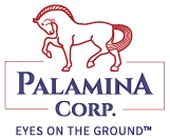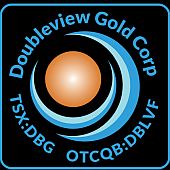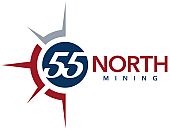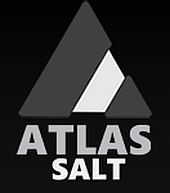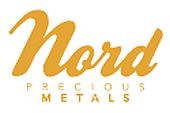 Arizona Gold & Silver: Validating the Oatman hypothesis
Arizona Gold & Silver: Validating the Oatman hypothesis
This article is a sponsored feature from Mining.com.au partner Arizona Gold & Silver. It is not financial advice. Talk to a registered financial expert before making investment decisions.
There is a buzz around Arizona Gold & Silver (TSX-V:AZS) and it centres on one core hole at the company’s flagship Philadelphia Project in Arizona, US.
Philadelphia is located in Mohave County, northwestern Arizona, and is a gold and silver vein target being advanced in preparation for an initial resource estimate.
Results from ongoing core drilling show PC25-156 intersects 10m of unbrecciated banded and massive vein quartz within a 35.7m intercept of quartz vein and quartz vein breccia.
It’s the first time a drillhole has been deep enough to intersect an intact vein with the classic epithermal vein textures typical of the high-grade deposits known in the nearby Oatman Mining Camp.
The mid-August 2025 drill intercept represents a 59% increase in true thickness over drillhole PC25-155 that cut the zone 60m up dip. True thickness of intercepts in PC25-156 are about 64% of drill thickness.

Core from the drillhole has been delivered to Skyline Labs in Tucson for sawing, sampling, sample preparation, and assaying are due imminently.
With glee, CEO Mike Stark describes core hole PC25-156 as “undoubtedly the best looking hole we’ve ever drilled”.
It’s also caught the attention of Kaiser Research, which suggests, the language used by Arizona’s Vice President of Exploration Greg Hahn in announcing the results, suggests the assays could be a game-changer for the target outcome potential for the project.
The research firm’s implied project value chart for Philadelphia has a C$500 million ($770 million) target based on the outcome of 500,000 ounces grading 5-10 grams per tonne for the upper 300m of the 1km Philadelphia vein.
“Based on 132 million fully diluted and no further dilution this implies a future target of C$3.82 when Philadelphia has completed most of the exploration-development cycle. At C$0.34 the stock is starting to exhibit S-surve pricing for this scale of outcome,” the firm reports.

“However, the market has already understood this potential outcome and thus it cannot ignite S-curve action except possibly because the market is taking US$3,000+ gold seriously with regard to exploration stage projects.
“That I do not yet see as happening. The IPV chart below has C$1.5 billion as a target outcome based on the Oatman Hypothesis which indicates a future price of C$11.47.
“The current stock price of C$0.34 is in the lower part of the fair speculative value range for that sort of outcome, which means the market sees the outcome is plausible but does not believe it is an emerging reality.”
Oatman Hypothesis
Kaiser Research believes investors who are buying stock are speculators who are betting that Hahn’s language in the latest news release will be confirmed by assays soon. The research firm poses the question as to whether validation of the Oatman Hypothesis will ignite S-curve market action in terms of share price.
As Stark explains to Mining.com.au, there is plenty more work at Philadelphia. Although x-ray fluorescence (XRF) indicates something potentially significant – and worth pursuing.
So, what is the Oatman Hypothesis?
The Philadelphia property is situated within the Oatman District of Arizona – a historical mining area known for its gold production, wild burros, and connection to Route 66.
Earlier in August 2025, core hole PC25-155 delivered an intercept showcasing strong continuity of vein thickness with a notable increase in gold grade with depth to date.
Stark says the evolving vein textures – particularly the increasing replacement of bladed calcite by yellow quartz – are classic markers of a high-grade epithermal system. These textures are similar to those seen in the historical Oatman District, just 10km south, which produced more than 2 million ounces of gold from similar high-grade veins.
Like Oatman, Arizona Gold & Silver believes the Philadelphia vein system has potential to rapidly open up into high-grade zones capable of delivering substantially increased grades.
The further Arizona drills down, it virtually mirrors what’s happened at Oatman. A sample of rock was trekked over to the historical gold district to compare – “and it’s identical”.
“In terms of geology, 10 miles away is like nothing (in terms of distance). If you said 400 miles apart, no, that’s getting a little further,” the CEO tells Mining.com.au.

Four corners of Arizona’s strategy
Such is the attractiveness of hole PC25-156, Arizona Gold & Silver has signed three confidentiality agreements (CAs) in the past few weeks regarding its flagship asset. The interested third parties are seeking access to the data room.
Yet Arizona’s unanimously agreed upon strategy involves continuing derisking the project to a point it starts attracting formal interest. As it derisks Philadelphia and adds value, it will be continuing to fight for shareholders to derive that upside along the way.
“We will build the biggest resource that we possibly can before we’re taken out. And I’m using the word ‘take out’ because it will be sold to somebody. I couldn’t say that five years ago because we had too much unknown,” Stark says.
“Look, there is a phenomenal resource here that is being built with each and every drillhole. In fact, it is immense how much more gold we’re finding, as we’re stepping down, the grade is getting bigger, the widths are getting wider.
“That is the perfect scenario for somebody that’s looking for material right now and gold specifically.
“I want to improve value before we cede that control. So if somebody comes to Arizona Gold & Silver now and there’s not a lot of regard and wants to do a JV, wanting 75% of the company, here’s your 5 million bucks. Bye bye.
“There’s no merit to that. If somebody said to me, ‘Here’s $30 million’, which is roughly our market cap, and ‘We want to bring this into production, and here’s our credentials’, and they’ve done it three, five, 10 times before – that might have some merit.”
“We will build the biggest resource that we possibly can before we’re taken out. And I’m using the word ‘take out’ because it will be sold to somebody. I couldn’t say that five years ago because we had too much unknown”
This is likely welcome news for legendary natural resource investor Rick Rule who invested in the company in October 2024 when it closed C$4.627 million in financing.
The team at Arizona Gold & Silver are more invested in the property to joint venture or exit too early. Stark sees little value in executing exclusivity agreements at this stage until it has a fuller picture of the potential.
The CEO remembers while working at Exeter Resources 20 years ago when it had almost 2 million ounces of gold. One company viewed it as a solid target opportunity at a time many were seeking to build gold reserves.
The buyer that acquired the Exeter deposit eventually sold it to Barrick Mining (NYSE:B).
“But what did Barrick do? They put it in mothballs. They put the 2 million ounces onto their balance sheet. And they said, ‘We have two more million ounces’. They still haven’t done a thing with that property,” Stark recalls.
Arizona does not want history repeating itself with its deposit.
Pathway forward
In North America, much like Australia, despite record high prices gold exploration companies not on a pathway to development or production are not being valued in the market.
“If you’re a major, you’re making piles of cash, but you people think junior gold exploration companies would be making money hand over fist, and it’s not actually the case. The share prices are going down,” the CEO explains.
In progressing its projects, Stark says Arizona’s Vice President of Exploration Greg Hahn is the most trusted individual he’s had the privilege of working with who has a wealth of experience – including helping build three mines.
As mentioned in mid-August, intersections at Philadelphia were reported of 10m of unbrecciated banded and massive vein quartz within an almost 36m intercept that hosts quartz vein and breccia.
The intercept is at 300m-plus depth in the vein system and remains open down-dip. Assuming symmetry across the dip extent drilled the modeling predicts, this vein will continue down dip for another +/- 300m at least, Hahn says.
Demonstrating the continuity of this vein along a strike length of 1km would establish a very significant discovery. The drillhole confirms Arizona’s geological modelling.
This understanding of the low sulphidation epithermal system predicted that with depth the system would be wider and potentially much higher grade Arizona penetrates the “boiling zone” of the system.

“We continue to see a decrease in bladed calcite and an increase in quartz replacement of bladed calcite. In addition, the interior of the unbrecciated vein displays classic epithermal textures including finely layered banding of colloform layering and thin alternating compositional banding,” Hahn says.
“Yellow quartz dominates the upper part of the intercept and green, grey, and brown quartz dominate the lower portion of the vein intercept. This is also a feature we have never witnessed in drill core before.
“In short we believe the vein system has the potential to rapidly open up into high-grade zones capable of delivering substantially increased grades.”
In mid-July, a vein intercept coinciding with zones of yellow quartz within an epithermal quartz and bladed calcite-bearing vein system was drilled at the project.
Drillhole PC25-154 intersected 22.47m @ 3.05 grams per tonne gold, including 11.5g/t gold across 1.59m and 6.41g/t gold across 3.69m. The results continue to indicate that the mineralisation in the system is getting “stronger” with depth.
“And that’s our company motto. If we think we can do it, we’ll say we think we can do it by the time we produce the information”
Despite the Kaiser Research note, Stark says Hahn is known to take a conservative approach to describing results. He would rather under promise and over deliver.
“And that’s our company motto. If we think we can do it, we’ll say we think we can do it by the time we produce the information,” the CEO adds.
Arizona Gold & Silver is continuing drilling at Philadelphia to test downdip of the Perry vein intercepts. Meanwhile, drilling has been completed on the adjacent Rising Fawn zone, until assays are received.
What will the results show? And will validation of the Oatman Hypothesis ignite S-curve market action in terms of its share price? Watch this space to find out.
Write to Adam Orlando at Mining.com.au
https://arizonagoldsilver.com/








